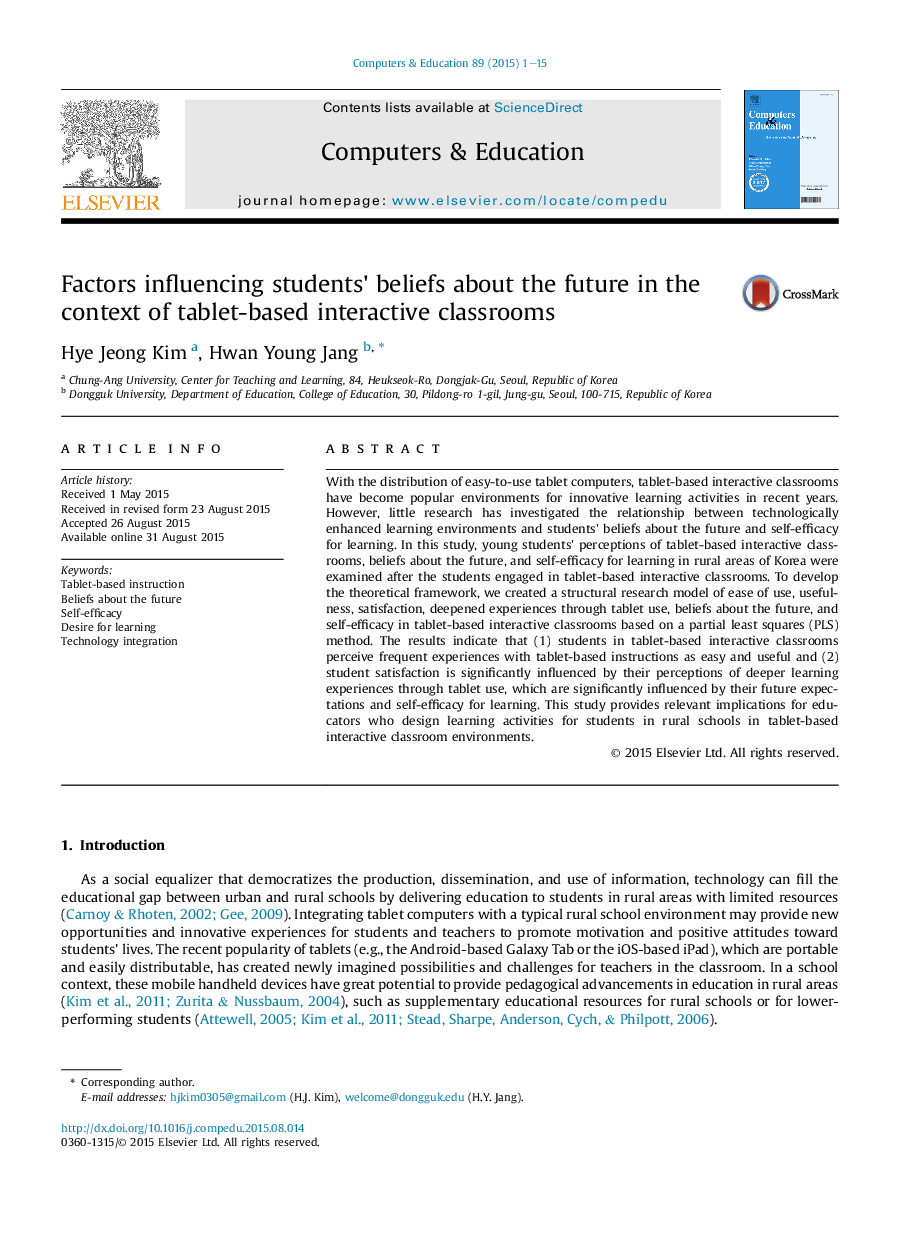| کد مقاله | کد نشریه | سال انتشار | مقاله انگلیسی | نسخه تمام متن |
|---|---|---|---|---|
| 348230 | 618170 | 2015 | 15 صفحه PDF | دانلود رایگان |
• Few studies have investigated the beliefs about the future of students using tablets in interactive classrooms.
• This study examined a research model that analyzes beliefs about the future and other factors.
• Rich experiences with tablets improve students' beliefs about the future.
• The impact of technology experiences on beliefs about the future was mediated by desire for learning.
With the distribution of easy-to-use tablet computers, tablet-based interactive classrooms have become popular environments for innovative learning activities in recent years. However, little research has investigated the relationship between technologically enhanced learning environments and students' beliefs about the future and self-efficacy for learning. In this study, young students' perceptions of tablet-based interactive classrooms, beliefs about the future, and self-efficacy for learning in rural areas of Korea were examined after the students engaged in tablet-based interactive classrooms. To develop the theoretical framework, we created a structural research model of ease of use, usefulness, satisfaction, deepened experiences through tablet use, beliefs about the future, and self-efficacy in tablet-based interactive classrooms based on a partial least squares (PLS) method. The results indicate that (1) students in tablet-based interactive classrooms perceive frequent experiences with tablet-based instructions as easy and useful and (2) student satisfaction is significantly influenced by their perceptions of deeper learning experiences through tablet use, which are significantly influenced by their future expectations and self-efficacy for learning. This study provides relevant implications for educators who design learning activities for students in rural schools in tablet-based interactive classroom environments.
Journal: Computers & Education - Volume 89, November 2015, Pages 1–15
